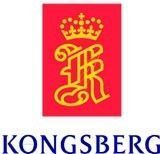
-
StatusCompleted
-
Status date2013-05-14
The main objectives of the FBAR (Film Bulk Acoustic Resonator) activity are to establish technologies, manufacturing processes and design methods for filters utilizing FBAR resonators. The target application is low-loss FBAR filters for space applications. Thin film bulk acoustic wave resonators could improve filter performance compared with filters based on surface acoustic wave resonators, and also extend the frequency of operation from around 2-3 GHz for SAW filters to at least 6 GHz for FBAR filters.
The project aims to perform a review of the existing BAR filter technologies and propose a manufacturing concept. Simulation models will be established for the optimization of the resonators and for the definition of the resonator stack. The proposed BAR fabrication processes will be validated though the fabrication and characterization of coupled resonators. Based on this, two targeted filters at S-band and C-band will be designed, developed, manufactured and tested.
The key challenges in the program are to initially establish the processes for manufacturing the required resonators, and later to develop this further to be able to produce the required filters.
When it comes to the resonator performance, the quality of the layered thin film structures is of highest importance.
The next challenge is the development of the required design and simulation models that are needed from resonator design to complete filter.
The establishment of FBAR technology for space applications paves the way for zhe miniaturization of satellite receiver modules. Here the FBAR filters can have the potential to replace larger filter technologies. Also, the FBAR filters have the potential to complement the SAW filters by offering a higher frequency range, steeper filter and better power handling.
Low loss filters based on surface acoustic wave (SAW) resonators have been demonstrated to be quite successful, but the SAW technology has its limitations. The highest frequency of operation is about 2-3 GHz for SAW, and at least 6 GHz for FBAR filters. When it comes to filter steepness (relative width of transition band), the Q-values of the resonators both at resonance and anti-resonance are very important. For the target specification SAW technology is limited to Q-values of about 1000 at 2 GHz, whereas the FBAR technology should have the potential for at least 1500.
The program consist of two phases:
Phase 1 shall establish the FBAR technologies based on detailed literature review, resonator and process definitions. This will then be used for as input for the detailed design, manufacturing and tests defined in Phase 2.
Phase 1
Task 101: Review of BAR Filter Technologies
Task 102: Detailed BAR Technology Characterization and Validation
Task 103: Preliminary Design of Filter and Test Plan
Phase 2
Task 201: Detailed C-band filter design
Task 202: Filter Manufacturing and testing
Task 203: Discussion and Identification of Limitations and Improvements
Completed (program was terminated after Phase 1).




